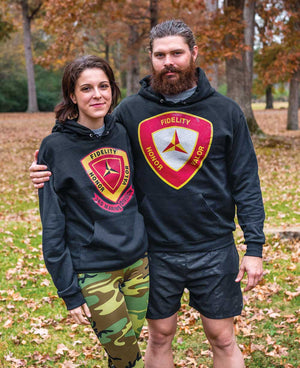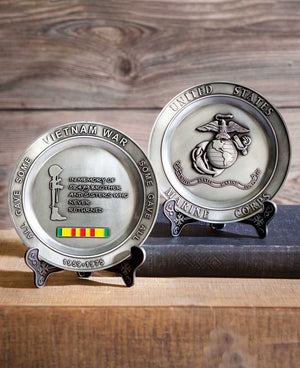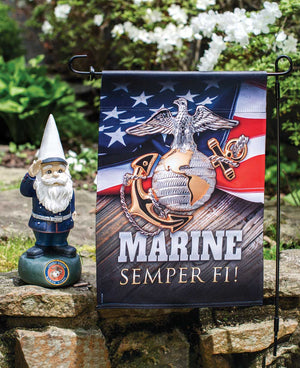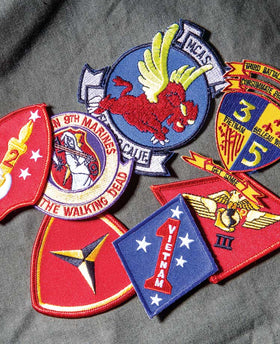Request a Catalog
27th Marines on Iwo Jima Story
BLOOD PROMOTIONS: 27th Marines on Iwo Jima
Submitted by Chuck Tatum
Major Justin G. Duryea was the original commander of the 1st Bn 27th Marines. When he came aboard, he brought his staff from the parachute training school located at Camp Gillispie, California.
When Lt. Col Butler came aboard, the major moved up to regimental headquarters and became the 27th Marines operations officer. He received a promotion to Lt. Col. As an operation officer, he was in charge of plans and training. That chore included devising operational plans for all the battalions of the 27th Marine Regiment.
I still remember the Major from the earliest days of the first battalion at Camp Pendleton, but I realized when I began this book, that I didn’t know much about him. What outfits he had served in? Where was he from? Was he married? What happened to him after the war?
For the purpose of this book, I set out to find out all about Col. Justin Duryea and in my research, I discovered something I had forgotten. Col. Duryea was a former Marine Paratrooper, and was still a captain that had served on Guadalcanal and in the Solomon Islands campaign with the first Paramarines Battalion as a company commander. Little wonder that he was so well linked by the 1st Bn 27th.
Captain Duryea, on September 14, 1942, had received Japanese gunshot wounds in his left forearm and leg and had been awarded the Purple Heart. He was promoted to Lt. Col shortly before Iwo Jima. I remember the day Lt. Col. Duryea assumed command of 1st Bn 27th. It was March 5, 1945, D-day plus 14. It was the day Lt. Col. Butler was killed by Japanese shell fire and the entire 5th Division was on a day of rest.
Day of rest or not, battalion commanders have to keep abreast of the situation at the front. Col. Butler was on reconnoitering at the front lines. The 1st Bn was up beyond the village named “Motoyana” (First Mountain in Japanese) at the time. Motoyama had been a small village, but was now just a dot on a military map.
The colonel’s jeep had stopped near a shelled-out sugar mill, one of the few private enterprises on Iwo Jima. Not much remained of the sugar mill. The Japanese had dismantled it and used its timbers to build pillboxes and gun emplacements.
The colonel was just getting a firsthand look at what the terrain looked like and what we would face the next day. To save time he was using his jeep. On Iwo Jima, if it had wheels and moved, The Japanese considered it a number one target. A jeep is a high silhouette vehicle, moving fast a difficult target, sitting still, duck soup to any well trained artillery man…Marine or Japanese.
The shell that got Col. Butler completely missed his jeep driver, Pfc. Stanley Burnett, and the sergeant accompanying his was only slightly wounded.
As soon as the word of Col. Butler’s death reached Col. Wornham at regimental headquarters, he called Col. Duryea and asked him if he wanted his old battalion back. Do cats like cream? Does Wimpy eat hamburgers? Hell, yes he did! After all, he had helped train the battalion. Besides, he was champing at the bit to get a combat command. After all, he had earned it.
Grieving for the lost comrades was a luxury that one could not afford on Iwo Jima. There was no time. Col. Butler and Col. Duryea had been good friends and fellow officers, but the furor at the front demanded Col. Duryea’s most urgent attention. His concern, now, was how to mount a new offensive with what was left of the 1st Bn 27th Marines. He sure had his job cut out for him.
Normally, a battalion executive officer, as next in command, would take over if the commanding officer was killed. The 1st Battalion’s exec was Major William Robert Tumbelston. But, things were not normal on Iwo and Col, Wornham, the regimental commander, sent Col. Duryea to lead the 1st Battalion. For now, the colonel put his grief on the back shelf and busied himself with the next day’s battle plans. There would be time to grieve later.
Major Tumbelston briefed Lt. Col. Duryea on the existing situation at the front. That’s what executive officers are for…to assist. At this time, it couldn’t be known that Major Tumbleston’s opportunity to lead the battalion was only a few days away. What follows is what happened to Lt. Col. Justin Duryea.
Commanding the 1st Bn 27th Marines, was a bad luck, high risk job. Bad luck has a domino effect and sometimes it is someone else’s bad luck that gets you.
The next four days were busy ones. The 1st Battalion forged ahead with a vengeance and fury unmatched in the annals of warfare. We took hill 326A and were, at last, fighting on a level field. The defenders had lost the advantage of the high ground.
To see where the heaviest opposition was coming from, Col. Duryea and Major John W.A. Antonelli, commander of the 2nd Battalion, went up to the frontlines. They had turned to leave, after walking about 20 feet.
Col. Duryea noticed that his runner was not in evidence and called out that he was ready to leave. The runner came from behind a huge rock and started across a littleused farm road. He took one step too many. One step that proved fatal. He stepped onto a land mine, a set for personnel. No one ever knew for sure what size the mine was, probably a 6″ shell. It’s hard to tell after they go off.
The poor, luckless runner was blasted to smithereens. They couldn’t even find his dogtags. The colonel took the huge fragment of the shell in his left arm. It was so big that it tore off his arm. It struck him in the hand and pushed everything up through his elbow. When surgically treated, the mass of elbow had to be removed, leaving a 4″ stump.
To make matters worse, another fragment slammed into the colonel’s left knee, smashing it and breaking the femur. When the fragment, about the size of a dime, was removed, machine threads were still visible.
Major Antonelli was knocked down by the blast and seriously blinded by the sand from the explosion.
And yet, it still wasn’t over for Col. Duryea. In the stretcher bearers’ haste to move the colonel, his left leg slipped off the stretcher. A Japanese sniper took advantage of it with a bullet that passed through one side and out the other.
The war, and command of the 1st Battalion, was over for the colonel from Newburgh, New York. Lt. Col. Duryea and Major Antonelli were evacuated to a field hospital.
The President of the United States awarded Lt. Col. Justin Duryea with the Silver star for the gallantry in action, his second medal on Iwo Jima. The citation for included on the citation won by the First Battalion Twenty-seventh Marines.
The colonel faced a long and painful recuperation. He went through a lot of different Naval hospitals, finally ending up at the U.S. Naval Hospital in Philadelphia, Pennsylvania. Lt. Col. Duryea was one of the few Marine officers to win 2 medals on Iwo Jima.
When we hit the black sand of Iwo Jima beaches on D-day, Col. Duryea was in charge of R-3 Plans and Training. He was responsible for breaking down regimental plans of the battle, when received from divisions, into battalion plans, and all the details of training programs, locations, funding, etc. He carried out his job with promptness and dispatch. In fact, he was so good at his job, it won him the Bronze star.
The colonel’s first job as R-3, after we hit the beach, was to set up a command post for the regiment. The regiment command post is the nerve center for the entire operation of the regiment. From this command post, Col. Duryea was able to direct the movements of the battalion. It was a good thing that he did, as the invasion ground to a halt. The forward movement of the regiment had been soaked up in the black sands of the beach. The violence of the Japanese bombardment was taking a deadly toll on the marines lives. As soon as radio contact has been established from regiment to the battalions, things got better. Coordinated instructions were dispatched that got the regiment on the attack again.
As the head of R-3, the colonel had the responsibility of devising the plans for training. In addition, on the instructions of Col. Wornham, he proposed the regimental attack plan. All orders to the battalion commanders came from Col. Wornham. The actual training of the battalions was conducted by the battalion commanders of the 27th Marines. The colonel knew that the 27th was well trained because he had planned the training.
Duryea must have proposed a good plan because the attack began with the skill of movement the battalion commanders had taught there Marines. The battle had been joined and Lt. Col. Duryea earned his first metal on Iwo Jima.
The citation for his Bronze star can be found in the section on citations.
Lt. Col. Duryea certainly had the mettle to be a Marine. He did more then his share to insure the victory on Iwo Jima. Major John Antonelli, who had been with Col. Duryea, had received shrapnel and sand in his right eye and a busted ear drum. A doctor at division hospital took the shrapnel out and had his ear and eye looked after at the battalion aid station.
That same day, while still suffering from the effects of the blast, he returned to the front lines. The 2nd Battalion was in trouble. Their advance had been stopped dead in its tracks by intense enemy fire coming from the north.
Major Antonelli went to check out the cause of their opposition and to get a firsthand look at the situation. He worked his way forward of the front lines of the 2nd Battalion and then to the top of a small clump of rock. The defenders got lucky and the Major unlucky. He was severely wounded. Despite his condition, he refused evacuation until he could confer with Major Gerald F. Russell, his executive officer, and issue instructions for the continuation of the attack.
Was that the end of Major Tony Antonelli? Not by a long shot! After treatment at the field hospital, Major Antonelli went right back to head the 2nd Battalion.
The 2nd Battalion was again under heavy Japanese attack. At this point he was ordered back off the front lines by Col. Wornham.
Guess who was back at the 2nd Battalion command post the next day? Absolutely! Major Tony Antonelli. This went on for the next seven days.
Major Russell, Tony’s executive officer was by his side during the daytime and took over the command at night. The role of the executive officer is not to stand-by role. He helped his commander in a thousand ways, expediting the commands, briefing the company commanders, checking at the front to see that plans are carried out, counseling with the commander on how best to accomplish the mission assigned to the battalion.
On the 16th of march, Col. Wornham personally ordered Major John W. Antonelli evacuated off the island of Iwo Jima before he got himself hurt again or his wounds became infected. “Major Tony” won himself the undying gratification of his commander, his nation and his men…and the Navy cross.
When Col. Duryea was wounded and evacuated, It was Major William R. Tumbelston’s turn to command the 1st battalion of the 27th Marines.
I said before that commanding the 1st Battalion was a bad luck job, and this held true for the Major as well.
Major Tumbelston had joined a Marine reserve battalion in Philadelphia back in January of 1938. He was a graduate of Pennsylvania Military Academy.
Born on December 21, 1913, Major Tumbelston was older then Col. Duryea, and had more time in the corps. He was 32 years old when he invaded Iwo Jima. Thirty-Two was young for a Major except when the promotion came faster.
The major took command of the 1st Battalion on March 9th, 1945 and commanded until the 14th of March, when he was taken out of action with a gunshot wound to his left arm and shoulder. The wound would leave his arm very crippled.
In the five days that Major Tumbelston commanded the 1st Battalion, The fighting for position of the fortress island intensified. The battalions foreword thrust, in the days that it was under the Majors command, blunted the defense of the Japanese defenders. No longer were they a full fighting force. They were compressed into an ever decreasing land area. The battleground was so condensed that the remaining defenders increased their opposition with the fury of condemned men, with no chance of survival, sworn to military code that mixed ones fate with religion that dictated there end before the first shots were fired.
The time had come for the remaining defenders to pay the price of the code so strict that surrender was not an option. The Japanese general had his code. The commander of the first Battalion had his code. Although not sworn to, It was just as effective as the code of the samurai warrior. The Marines’ code was ‘Death before dishonor’. Gunnery Sgt. John Basilone had his tattooed on his arm. The officers and the men had adopted this code as their own. With the loss of Major Tumbelston, command of the 1st Battalion next fell to Major William H. Kennedy transferred from the 3rd Battalion to duty as the commander of the 1st Battalion. He was the fourth commander of the battalion. Would his luck be any better?
The black cloud of doom that hovered over the commanders of the 1st Bn 27th Marines caught up with Major Kennedy a few days after taking command of the battalion. His luck ran thin on March 12, 1945.
The Major was wounded by a nearly spent bullet that struck him in the side. Nearly spent because the bullet only had enough velocity left to penetrate his skin and push the cloth of his jacket and T-shirt into the wound. After treatment at the field hospital, he refused evacuation and returned to the front.
Maybe he wasn’t lucky, but he was a helluva commander for the 1st battalion. Aggressive would be the word to describe his leadership.
The battle had thinned the ranks of the 1st battalion. The Marines that were left, were near complete exhaustion and those that were left were largely replacements. They were encouraged by his gallantry in action.
For his actions in leading the 1st battalion he was awarded the Silver star.
On Saturday, 17th March 1945, Col. Wornham called Lt. Col. Donn Robertson to regimental headquarters. Col. Robertson that division had directed the the 27th Marines be reformed into a four company battalion, using the forces left in the 27th Marines. The 1st and 2nd battalion was to provide two companies, plus headquarters company. Col. Robertson was to be the commander. Reports on other books indicated that the 27th Marines were disbanded. This is not so. My authority for this comes in a direct quote from the now Lt. General Donn Robertson.
“The 27th regiment was not disbanded. All the units of the 27th Marines still existed. The companies from the 1st and 2nd battalion were replaced under my operational control. My basic unites still belonged to the 3rd battalion.
“The Japs were on the sides of the valley we attacked. They had no way out. We pushed them towards the ocean, the opening at the end of the valley.
“Division gave me operational control of the tank battalions, which I used to lead our attack. Slowly all tanks moved up the valley covered by our troops firing their napalm on the Japs on the sides of the valley.
“It didn’t take many days to kill them as we kept the firing and pressure on them. A flame tank would depart the valley to refuel and then return to fight again with a full fuel load.”
It is not known what the exact number of troops left in the 27th Regiment was at the time of this regrouping. Lt. Col. Robertson, l commander of the 3rd Battalion , received a citation for the Navy cross for numerous actions during the period from February 19th to March 23, 1945. He was actively involved during the entire siege on Iwo Jima.
Lt. Col. Robertson’s 3rd Battalion was to the right of the 1st Battalion. The 2nd Battalion was to the right of the 1st Battalion. The 2nd Battalion was in reserve. Hill 362A was one of the major defensive lines for the Japanese. Its height of 362 feet commanded the last of the high grounds. The Japanese defenders were ordered not to fall back from this position, to die at their guns. The high ground advantage must not fall to the Marine attackers. And the Marines were instructed to take the high grounds regardless of the cost. The head-on conflict was to take a frightful toll on both sides. The order had been issued and the die was cast.
The battle began about 0820 when the order to move out was given. The battle for possession of Hill 362A raged on through the day, see-sawing back and forth. Both sides attacked and counter attacked. At nightfall both sides set up their defenses.
The Battle would go on through the night. Every Marine who fought at Hill 362A could tell you tales that would freeze your blood.
Col. Robertson’s luck held all the way. And not because of protection of his command post, because he didn’t spend much time in or out of it. He was at the front with his troops every chance he got. His executive officer, Major Frederick J. Mix Jr., didn’t share the same guardian angel that looked after the colonel. He was wounded during the siege.
Lt. Gen. Donn Robertson has reason to recall the events leading up to Major Mix being wounded. The Following is from his accounts of the events of that day.
“We were having a tough digging out the Japs and while I was foreword with one of the companies, I had Major Mix in front with other Company. By chance, we each drew back to the battalion command post. About that time the Japs opened up on us with Artillery fire. We jumped into a large shell hole occupied by four Marines also taking cover.
“The first round landed in the hole killing the four Marines. Major Mix had a slight wound, which did not require evacuation, and I had shrapnel holes in some of my clothing, but was not hit.”
How do you figure your odds in combat? You don’t. If it’s not your turn to go, it’s not your turn to go. It’s all up to the Man.
Major Mix was with the 3rd Battalion all the way on Iwo Jima. His actions as the executive officer of the battalion won him the Bronze star medal.
After the hostilities ended with the surrender of Japan, Major Frederick J, Mix Jr. continued his career in the Marines until his retirement. He died I San Diego, California in 1986.
On March 16, 1945, Major Gerald F. Russell took command of the 2nd Battalion, 27th Marine. As executive officer, He had been In the thick of the battle from D-day. Now he had the job as commander of the battalion. The Major was still in the siege despite some painful facial wounds suffered on February 23rd, B-day plus 4.
On the day, Major Russell was leading the 2nd battalion up to the front after a short rest. They were badly shot up and short of men. The battalion was in regimental reserve, refitting and receiving replacements from the 27th replacement draft.
Major John Antonelli, commander of the Battalion, and Col. Thomas Wornham, regimental commander, were at the front lines on a reconnaissance mission. Major Russell received a radio message from Major Antonelli telling him to bring up the 2nd Battalion.
With a battalion on the move, the defenders were quick to react. The battalion’s approach came under intense enemy artillery and mortar fire. A shell exploded not many feet from Major Russell and he and some men were wounded. The Major got his in the face and the blast caused some temporary loss of hearing. He was taken to an aid station were his wounds were dressed and then to an evacuation area near the landing beach. He refused to be evacuated because the regiment was short o officers. After a short rest, he went back to the front lines and the 2nd battalion. On the 17 of March 1945, Major Russell was ordered to form2 rifle companies with the Marines he had left in the 2nd battalion and report to Lt. Col. Robertson for the last phase of the siege of Iwo Jima, the push to finish off the Japanese defenders.
Every day was a bad day on Iwo Jima. The Marines of the 27th regiment never had a good day. There were no clear cut victories, only small gains, 200 yards one day, 400 the next. Each yard in forward progress was paid for in blood. The final goal was the end of the island and the Pacific Ocean. With the walls of their lava-rocked fortress crumbling around them, the Japanese stiffened there opposition. Major Russell Marines increased the fury of the attack. Steel against steel, will against will, the determined Marines attacked against the fanatical Japanese defenders.
When would it all end? Would either side have anyone left to taste the bitter fruit of victory? Would the cost of winning be worth the prize? These questions were not for the Marines to ponder. Marines are trained to defend their country and fight its wars to the finish. Iwo Jima was only the only target. Day after day the siege waged on and the Marines were a few hundred yards closer to the sea and the end. If you made it through today tomorrow might be the end of the line. Only God knew for sure and he wasn’t telling.
The mop-up plan was to smoke the Japanese out of their hardened defense positions. The weapons …rifles, carbines, B.A.R.s, machine guns, hand grenades, flam throwers, composition c-2 … and the Marines!
The very closeness of the reduced area to fight in, made the continued use of heavy weapons impossible. Artillery, air power and the use of Naval gunfire offshore had to be secured. As always, in the end, it was up to the Marines to mop-up the last Japanese Generals troops. Major Russell’s 2nd Battalion was in the battle to the last yard. His heroic action as the 2nd commander of the 2nd battalion were reworded with the Bronze Star Medal and the Military order of the Purple Heart.
The Japanese resolve to defend Iwo Jima never lessened. The intensity of the attackers never diminished. This set the stage for the final phase of the siege at Iwo Jima.
The ranks of the 27th Marines grew thinner every day. History does not reveal the number of the Marines that Col. Robertson assembled for the final push to crush the defenders and drive to the sea. General Robertson believed that it was more then the 485 marines reported in the other publications. Many of them had been wounded only slightly, patched up, and sent back to the front lines. The colonel assembled his thin green line for the final assault on the citadel.
General K’s defenders numbers about 1000 according to the intelligence report. How many actually remained was anyone’s guess. The only sure thing was that the defenders that remained were full of fight and prepared to die at their guns. Col. Robertson knew that his reinforced battalion could take the full measure of the defenders…if the composition C-2 explosive, hand grenade and napalm for his tanks held out. The battle went on for days and nights until the last defenders died in their embattled caves and bunkers. Col. Robertson used his tanks with their flamethrowers to decimate the last of the defenders.
The terrain, to the end, was in the favor of the defenders as it was throughout the siege. The last battlefield on Iwo Jima was a hellish of stone and they had truly entered the valley of death.
On March 23rd, the 33rd day of the siege, Lt. Col. Donn Robertson led his rag-tag Marines of the 27th to the Pacific Ocean. The organized resistance of the defenders had ceased. They didn’t surrender. There just wasn’t anyone left to defend the fortress. They had fought to the last man. The chance to surrender was denied them. Their devotion to their empire was a military mind-set thousands of years old ruled surrender out of an option.
I don’t believe history recorded how many Marines were left in the 27th regiment of the fifth division at the end. The Marines that made it all the way knew ‘someone up there’ really liked them.
No calibration broke out. Each Marine said a prayer to his own version of a Supreme Being. They smiled and slammed each other on the back. Each Marine who made it was glad it was over and that they had made it all the way. Not many Marines would be able to say that.
Lt. Col. Robertson had his Marines Pick up their weapons, called them to attention and marched his thin green line back from the siege at Iwo Jima.







Comments
Leave a comment